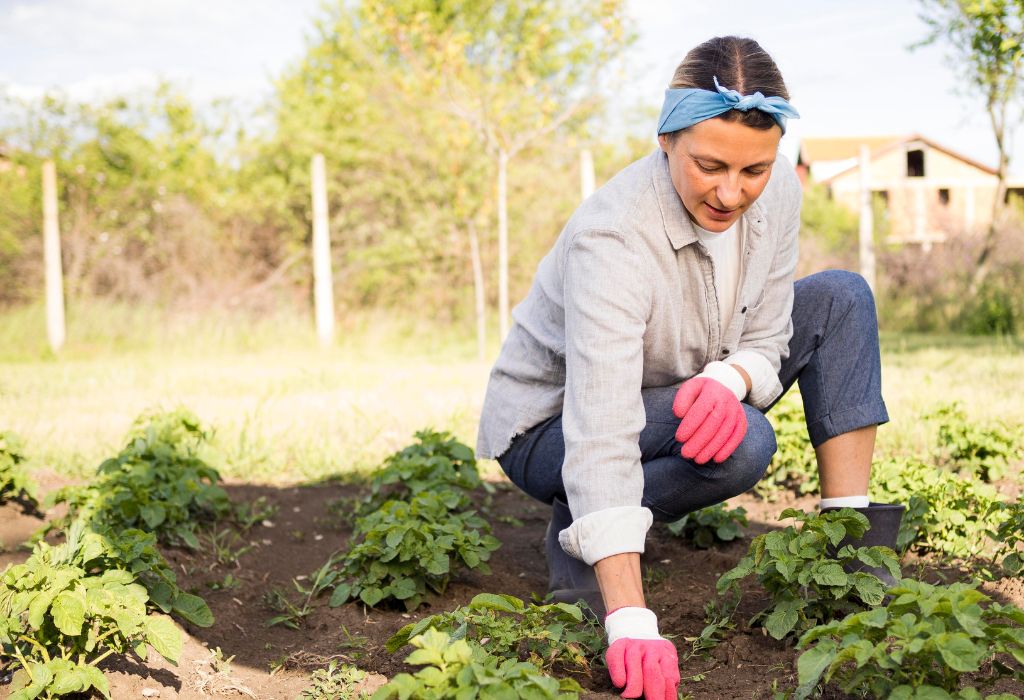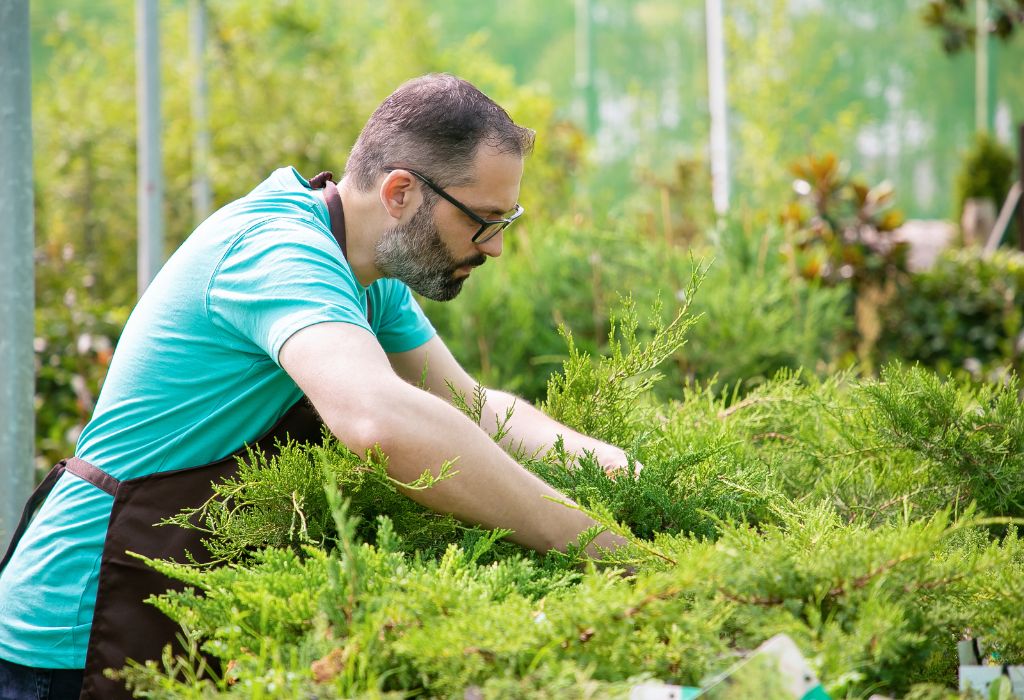A freshly tilled garden may look spotless, but hidden below are countless weed seeds waiting for the right moment. This raises a common question: can i till weeds into garden soil to improve growth, or will it create even more weeds?
The idea sounds practical. Instead of removing weeds, tilling them back in could recycle nutrients and add organic matter. For some young annual weeds, this can actually work.
But the risk is often greater than expected. Many weeds regrow from chopped roots, while buried seeds can survive for years. Research shows soils may contain thousands of dormant weed seeds per square foot, forming what experts call a weed seed bank source.
Handled incorrectly, tilling can multiply problems instead of solving them. Still, with the right timing and techniques, weeds can sometimes be turned into a resource rather than a threat.
What Actually Happens When You Till Weeds Into Garden Soil?

Tilling seems like a quick solution, but the process stirs up more than just the surface. Beneath the soil lies a vast weed seed bank, filled with dormant seeds that can remain viable for years.
When the soil is disturbed, many of those seeds are brought closer to light and oxygen. This triggers germination, causing a sudden flush of new weeds shortly after tilling.
Perennial weeds add another complication. Plants like bindweed, quackgrass, and Bermudagrass spread through rhizomes or stolons, and fragments left in the soil can re-root and create even larger infestations.
The soil itself also pays a price. Frequent tillage breaks apart aggregates, reduces pore space, and disrupts beneficial organisms such as mycorrhizal fungi and earthworms.
Although short-term weed reduction is possible with shallow tillage, the long-term effect often creates a cycle of more growth. Disturbance favors fast-germinating species that quickly take advantage of exposed soil.
This constant turnover can leave gardeners working harder year after year. Instead of depleting the seed bank, each round of tilling may be planting the conditions for the next wave of weeds.
Understanding these hidden dynamics explains why tilling weeds is rarely as simple as recycling them into the soil. The real challenge lies in knowing which weeds can safely decompose and which will regenerate with even greater strength.
When It’s Reasonable to Till Weeds In
Not all weeds behave the same way when incorporated into the soil. Under the right conditions, some can break down into organic matter that benefits soil structure.
Young annual weeds are the safest candidates. When they are tilled in before flowering or seed set, they decompose quickly without a chance to spread.
This process is similar to using a green manure crop. Fresh biomass adds nutrients, improves aggregation, and stimulates microbial activity that supports long-term fertility.
However, timing is critical. Once weeds develop seed heads, tilling them in risks adding thousands of viable seeds to the soil seed bank.
Nutrient balance also matters. High-carbon residues can temporarily tie up nitrogen, so pairing them with a nitrogen-rich amendment prevents deficiencies.
When handled carefully, tilling small annual weeds back into the soil can act as a form of natural composting. Instead of fueling future infestations, this practice may recycle nutrients and reduce the need for synthetic fertilizers.
Still, this approach only works in narrow windows. Waiting too long or including the wrong weed species turns a potential benefit into a long-lasting problem.
When You Should Not Till Weeds Into Soil

Some weeds should never be tilled into the ground. Perennial spreaders such as bindweed, quackgrass, Bermudagrass, and Canada thistle multiply when chopped and buried.
Fragments of rhizomes or stolons left behind quickly re-root. Instead of reducing the problem, tillage creates more shoots and expands infestations.
Seed-bearing weeds are just as dangerous. Once flowers or seed heads are present, incorporating them adds thousands of fresh seeds to the soil seed bank.
Studies show weed seeds can remain viable for years underground. Each pass of the tiller can bring dormant seeds to the surface where light and oxygen spark germination.
Deep cultivation may seem like a solution, but it often makes things worse. Large equipment can damage soil structure while distributing seeds across multiple layers of the profile.
Even if immediate results appear positive, the long-term effects are rarely worth the risk. Avoid tilling perennial weeds or seeded plants if the goal is to reduce future pressure.
Safe management in these cases means removal, solarization, or hot composting. Only then can fertility be increased without fueling another cycle of weeds.
Smarter Ways to Turn Weeds Into Fertility
Weeds do not have to be wasted, but tilling them into the soil is rarely the safest method. Alternatives like hot composting, chop-and-drop, and mulching provide more control and fewer risks.
Hot composting is one of the most effective solutions. At sustained temperatures of 130–145°F, most weed seeds and roots are destroyed, leaving only nutrient-rich compost behind.
Cold piles rarely reach these levels. Without turning and monitoring, seeds often survive and sprout when the compost is reused.
Chop-and-drop offers another approach. When weeds are cut before flowering and left as surface mulch, they decompose without the same risk of re-rooting underground.
Covering these layers with straw or leaves improves breakdown. It also prevents sunlight from reaching fragments that might otherwise regrow.
Mulching weeds in this way not only returns organic matter but also protects soil structure. It reduces erosion, locks in moisture, and feeds beneficial microbes.
By redirecting weeds through compost or surface management, gardeners recycle nutrients while keeping the seed bank in check. This transforms unwanted plants into a resource rather than a recurring problem.
Proven Alternatives to Tilling Weeds Into Beds
When the goal is long-term fertility, several proven methods work better than tilling weeds into garden soil. These approaches stop weeds from spreading while improving overall soil health.
Soil solarization is a reliable option in hot climates. Clear plastic traps heat in the top layers, reaching temperatures of 108–140°F that kill seeds and shallow roots.
Sheet mulching is effective for new beds. Layers of cardboard or newspaper are overlapped and topped with organic mulch to smother weeds and block seed germination.
Occultation with black tarps is another method. Depriving weeds of light for several weeks exhausts their reserves and prevents regrowth.
The stale seedbed technique offers precise control. A shallow cultivation encourages weed seedlings to germinate, which are then destroyed before planting crops.
Each of these practices works by reducing the weed seed bank without disturbing soil structure. Unlike tillage, they cut down future infestations rather than fueling them.
By choosing solarization, mulching, or stale seedbed preparation, gardeners control weeds while building healthier, more resilient soils. These strategies protect fertility and reduce the need for repeated interventions.
Better Than Weeds — Use True Green Manures/Cover Crops

While some weeds can add organic matter, cover crops provide a safer and more predictable solution. They deliver fertility, weed suppression, and soil protection without the risks of spreading unwanted plants.
Green manures such as clover, mustard, rye, and vetch are widely used for this purpose. When incorporated before seed set, they release nutrients and improve soil structure.
Unlike wild weeds, cover crops are designed for reliability. Their growth cycles, biomass production, and C:N ratios are well studied, making outcomes easier to manage.
Residues left on the surface act like mulch. They suppress new weed seedlings, reduce erosion, and help conserve soil moisture.
Some species, like mustards, even release allelopathic compounds. These natural chemicals inhibit germination of competing weeds and provide added control.
By replacing weeds with planned green manures, gardeners gain the benefits of organic matter without fueling the soil seed bank. This strategy builds fertility and reduces long-term weed pressure in a sustainable way.
Step-By-Step Seasonal Plan
Managing weeds effectively means following a clear seasonal strategy. Each stage of the year offers opportunities to build soil fertility while avoiding the risks of tilling weeds into garden soil.
In spring, prepare a stale seedbed by encouraging weeds to germinate, then shallowly cultivate to destroy seedlings before planting. This reduces pressure early in the season and prevents adding fresh seeds to the surface.
During summer, solarization becomes most effective. Covering beds with clear plastic for four to six weeks can heat soil enough to kill weed seeds and shallow roots.
Fall is the ideal time to sow cover crops such as rye or vetch. These green manures protect the soil, add biomass, and suppress weeds through winter.
Throughout the year, use mulch or chop-and-drop methods for annual weeds before they set seed. Hot composting any removed material at 130–145°F ensures seeds and roots are destroyed.
By aligning practices with the seasons, gardeners maintain fertility while steadily shrinking the weed seed bank. This cycle prevents regrowth and builds long-term soil health without heavy reliance on tillage.
Conclusion
So, can i till weeds into garden soil to improve growth? The answer depends on timing, weed type, and soil goals.
Young annuals tilled in before seed set can safely decompose and add organic matter. In contrast, perennials and seed-bearing weeds only expand the seed bank or resprout after disturbance.
Smarter strategies such as hot composting, solarization, sheet mulching, and cover crops recycle nutrients without fueling infestations. These practices enrich soil while reducing the long-term burden of weeds.
Fertility comes from choosing the right method, not from burying every plant in the ground. By treating weeds carefully and keeping soil covered, gardeners turn a recurring challenge into an opportunity for healthier growth.
I’m Maya L. Greenwood, a lifelong plant lover who believes anyone can grow something beautiful with the right guidance. After years of testing soil mixes, pruning methods, irrigation tricks, and pest-safe solutions, I started EasyGardenTips.com to turn hard-won lessons into step-by-step advice. From seed starting and container gardens to composting and seasonal checklists, my goal is to make gardening simple, sustainable, and fun.
